  |
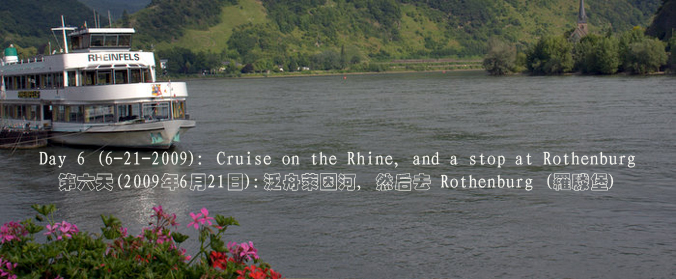
|
All pictures posted here were taken by us. Those from Google, brochure, and the web were duly noted. Most of my posted photos are still missing captions because I do not have time for them yet.
Note: Day 1 was flying from PDX (Portland, Oregon) to JFK (Kennedy Airport in New York), then to LHR (London), while Day 13 was flying home from Paris. |
下面简介摘自网络:
所有放在这里的照片,凡是网页摘取的都另有声明,其他的都是我们自己拍的。但许多照片没有加注释,因为我尚没有时间查证资料。
注:第一天系从美国飞英国;第十三天从法国飞回美国。 |
| by
the River Rhine 莱茵河畔 |
||
The hotel
we stayed by the bank of River Rhine: Zum Anker. It's family operated,
but is clean, tidy and friendly, like all German we met. It is
also the only hotel in all of our European tour that I could get a free
wireless access to the Internet. All other European hotels
charge the Internet access by the minute--as if their livelihood depends
on it. |
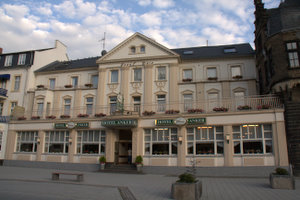 |
这是莱茵河畔的一个德国市镇。我们当晚就住在这个旅社。旅社是家族经营,小巧,但整洁,舒适,如同我们遇到的德国人。这也是我们欧洲游中唯一可以免费无线上网的旅社。在其他旅社,上网全都按分钟收钱,仿如他们的生计就指靠它。 |
 |
||
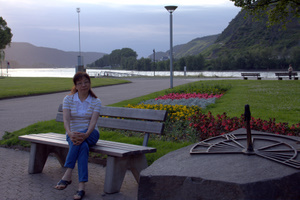 |
||
 |
||
 |
||
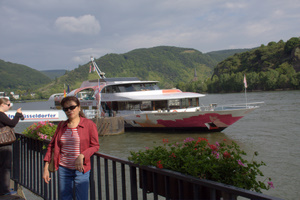 |
泛舟莱茵河 | |
towns, villages, castles and fortifications along the Rhine Below from Wikepedia: The Rhine is one of the longest and most important rivers in Europe, at 1,320 km (820 mi), with an average discharge of more than 2,000 m3/s (71,000 cu ft/s). The Rhine and the Danube formed most of the northern inland frontier of the Roman Empire and, since those days, the Rhine has been a vital, navigable waterway, and carried trade and goods deep inland. It has also served as a defensive feature and has been the basis for regional and international borders. The many castles and prehistoric fortifications along the Rhine testify to its importance as a waterway. River traffic could be stopped at these locations, usually for the purpose of collecting tolls, by the state that controlled that portion of the river. |
莱茵河畔的市镇、村庄与古堡 下面简介摘自维基百科:萊茵河發源於瑞士格劳邦顿州的阿尔卑斯山区,途经列支敦士登、奥地利、德國和法國,于荷蘭流入北海。全長约1320公里,通航段883公里,流域面积约20万平方公里[1]。莱茵河的长度在欧洲排名第四,仅次于伏尔加河、多瑙河与第聂伯河,它同时也是世界上最繁忙的水道之一。 |
|
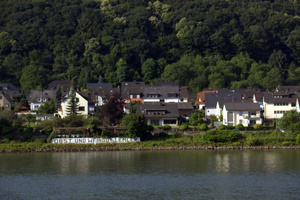 |
||
In very village,
there is a church.
|
每个村庄都有一个尖顶教堂 | |
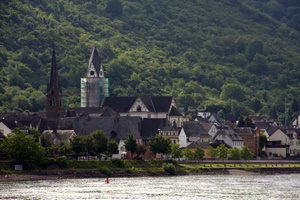 |
||
| a
stop at Rothenburg 罗滕堡
|
||
|
A famous street in Rothenburg with Koboldzellersteig and Spitalgasse Below is from Wikipedia: Rothenburg ob der Tauber is a town in the district of Ansbach of Mittelfranken (Middle Franconia), the Franconia region of Bavaria, Germany, well known for its well-preserved medieval old town, a destination for tourists from around the world. In the Middle Ages, it was an Imperial Free City. A significant fraction of Rothenburg is carfree. |
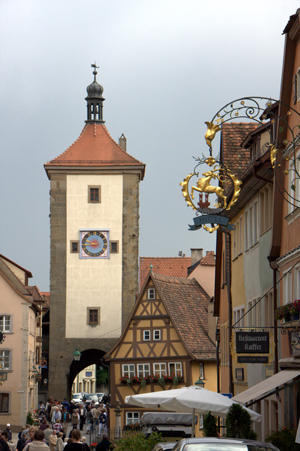 |
德国古城罗滕堡 下面简介摘自网络: 罗滕堡 (陶伯河) 罗滕堡是历史悠久的贸易古城,十三世纪属于神圣罗马帝国的自由城邦,拥有独立的防卫和司法权,各项商贸活动繁荣。雄伟的城墙和坚固的城门是中世纪城市的象征,现在仍完整保留昔日的城墙,被城墙包围的街道也保存良好原貌。在古城的石路上散步,攀登古老的城墙,可以感受中世纪的浪漫,别有一番趣味。 |
 |
||
 |
||
| It
was a surprise as well as a pleasure to find a Chinese restaurants in
such a prime real estate. The signs (top left) usually are an
indication of what Chinese cities the owners came from, and what cuisine
to expect. |
在这样寸土寸金的地段看到中餐馆,即惊讶有高兴。招牌(左上方) 一般可以告诉你厨师来自中国哪里,煮的是什么菜。 | |
The iron bars on the grass
by the road appear to have one purpose: stopping cars from driving over
or parking on them. |
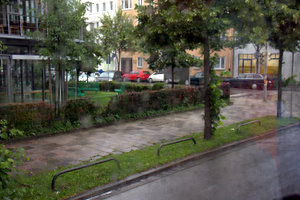 |
路边草地上的铁栏杆应该是用来阻止汽车停靠上去的。 |
|
street posters and ads |
街头广告 | |
(Click image to enlarge. 击打图片即可放大。)
![]() Day
7 (6-22-2009): Passing Austria
from Munich, then a stop
at Cortina
Day
7 (6-22-2009): Passing Austria
from Munich, then a stop
at Cortina
![]() 第七天(2009年6月22日):离开德国慕尼黑,经奥地利到达意大利
Cortina (科尔蒂纳丹佩佐,1956年冬季奥林匹克运动会城市)
第七天(2009年6月22日):离开德国慕尼黑,经奥地利到达意大利
Cortina (科尔蒂纳丹佩佐,1956年冬季奥林匹克运动会城市)
|
|